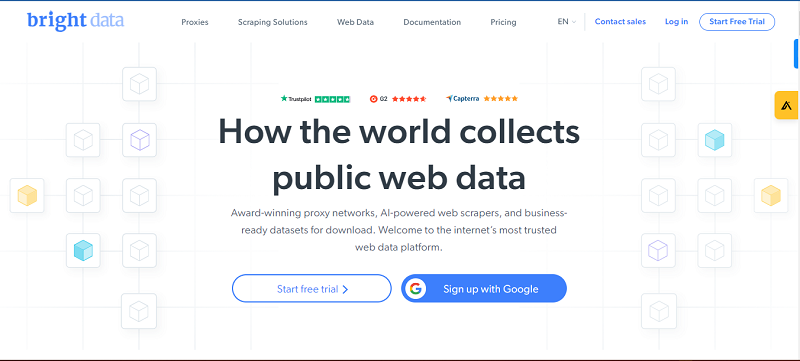The cloud is already providing businesses with such a range of advanced tools and services, optimizing communication across channels, improving global cooperation, and supporting collaboration between teammates and partners both on and off location; it’s a wonder then that cloud-based phone systems haven’t always been a top priority. The move from a traditional PBX system to VoIP sometimes seems daunting, but with the many benefits of such cloud communication, including improved efficiency and productivity, a range of cutting edge features, along with the ever-important cost savings, it’s a valuable switch happening more and more often.
Voice over Internet Protocol (VoIP) is, essentially, a telephone service that operates over the internet. Instead of plugging into the local telephone company, VoIP makes it possible to utilize a broadband connection for voice communication, providing all the benefits of standard PBX systems and a whole host of extras. To begin with, VoIP services offered users a cheaper calling service, but today such systems are far more than a cost-reduction tool.
Using VoIP hardware, analog phone signals are converted into digital signals which can be sent across the internet and then connected to the intended recipient’s phone system, all in the blink of an eye. VoIP services allow connection to other VoIP users, but more importantly they are just as capable of connecting to standard telephones residing on local telephone service provider networks. Perhaps you’re thinking, I’ve got Skype, that’s internet calling, right? Why would I need anything more? Well, Skype is really just the bare bones when compared to some of the advanced cloud-based phone systems available. Certainly valuable tools, standard internet calling systems make it possible to connect with others, typically using the same application, across the internet, but advanced cloud communication systems take it several steps further.
The more sophisticated cloud-based phone systems typically incorporate IP desk phones and computers into an organization’s infrastructure, making telephonic communication as uncomplicated and seamless as one could wish. This provides the advantages of standard telephone calls as necessary but adds the benefit of straightforward video and conference calling. The more progressive providers would generally also provide applications for smartphones which enables employee devices to act as part of an organization’s cloud communication system, along with features for secure voice, fax, and text.

Along with the expected call cost savings most VoIP systems will provide, cloud-based phone systems offer flexible infrastructure and hardware pricing that easily overshadow traditional PBX systems. Though PBX hardware implementation usually involves expensive initial outlays along with periodic fees for upgrades, maintenance, and training, cloud-based phone systems characteristically follow the cloud model we’ve all come to love; pricing is flexible, ownership of equipment remains with the service provider, along with the responsibility for all maintenance and upgrading, and Scaling up or down to meet current business requirements is a jiffy. Moreover, with the possibility of tagging in employee devices, the reach of such systems is extensive.
Bring Your Own Device (BYOD) policies are springing up everywhere as businesses recognize the need for security and privacy protocols; however, this phenomenon can easily be to an organization’s benefit if the necessary services are applied. Innovative Service Providers offer applications which unify personal devices with company cloud communication products allowing users to work from their own devices, improving productivity and efficiency through both a user’s familiarity with their tech and the possibilities for remote working. Such applications make it possible for users to call, text, and fax from their own devices while utilizing business numbers, and some solutions make it possible to incorporate business address books which avoid duplication of information and effort. And, of course, BYOD strategies reduce the amount of hardware which needs to be purchased by the company, additionally enhancing the cost savings provided by such a model.
Remote working is a trend that’s taken the world by storm, benefiting both employer and employee alike with a flexibility that often results in greater productivity and diminished downtime.
This IDC study discusses the worldwide connected devices 2022 predictions.
“The year 2021 has found IT decision makers (ITDMs) faced with a different set of challenges than in 2020. While COVID-19 continued to impact everything, many organizations are moving away from the triage situation of last year toward a more systematic embrace of connected devices technologies,” said Tom Mainelli, group vice president of Devices and Consumer Research at IDC. “Technologies such as wearables, 5G, augmented and virtual reality, and smart assistants have a huge role to play in the next normal, as do new consumption models. The next five years will see monumental changes in the IT market, and ITDMs must plan accordingly…”
Many predict that the United States workforce will be mobile, and so implementing strategies and tools to better facilitate this trend can only be to an organization’s profit. BYOD is one such strategy, and with the right applications integrating personal devices into a company’s communication system, the brand doesn’t suffer, and overall control remains high.
Another essential cloud-based phone system tool supporting a mobile workforce is the provision for meetings, be it online, conferencing calling, or video conferencing. Some of the better products on offer are capable of meetings between only two, or as many as a thousand, participants, and further offer data sharing options for transfer of presentations, pictures, and work product across cloud storage platforms. Such collaboration opportunities between employees, business partners, and clients via a cloud-based model reduce travel time and expenses and keep personnel focused on core business activities.
Furthermore, for remote workers, flexi-workers, and even for workers taking some time off, an optimum cloud communication system makes it possible to stay in touch with their home office, in-country or out-of-country, without bearing the brunt of expensive roaming costs. Such advanced applications ensure team cooperation isn’t detrimentally affected by colleagues being out of the office and foster quality customer engagement by ensuring relevant personnel are always reachable.
By Jennifer Klostermann





